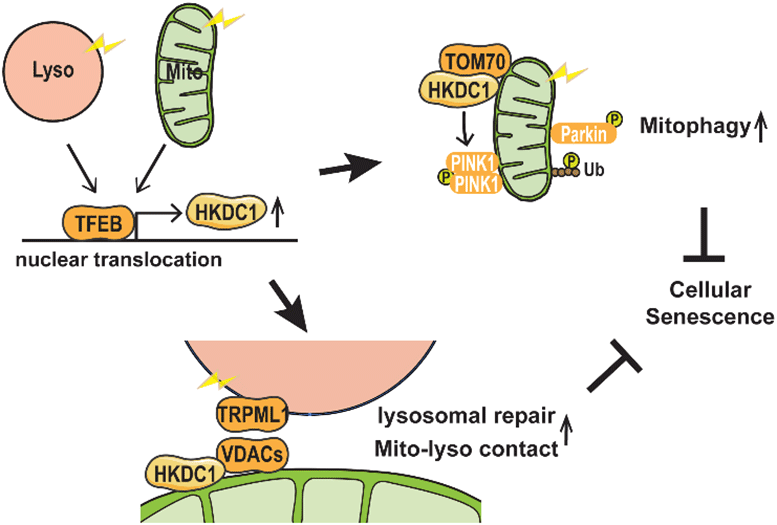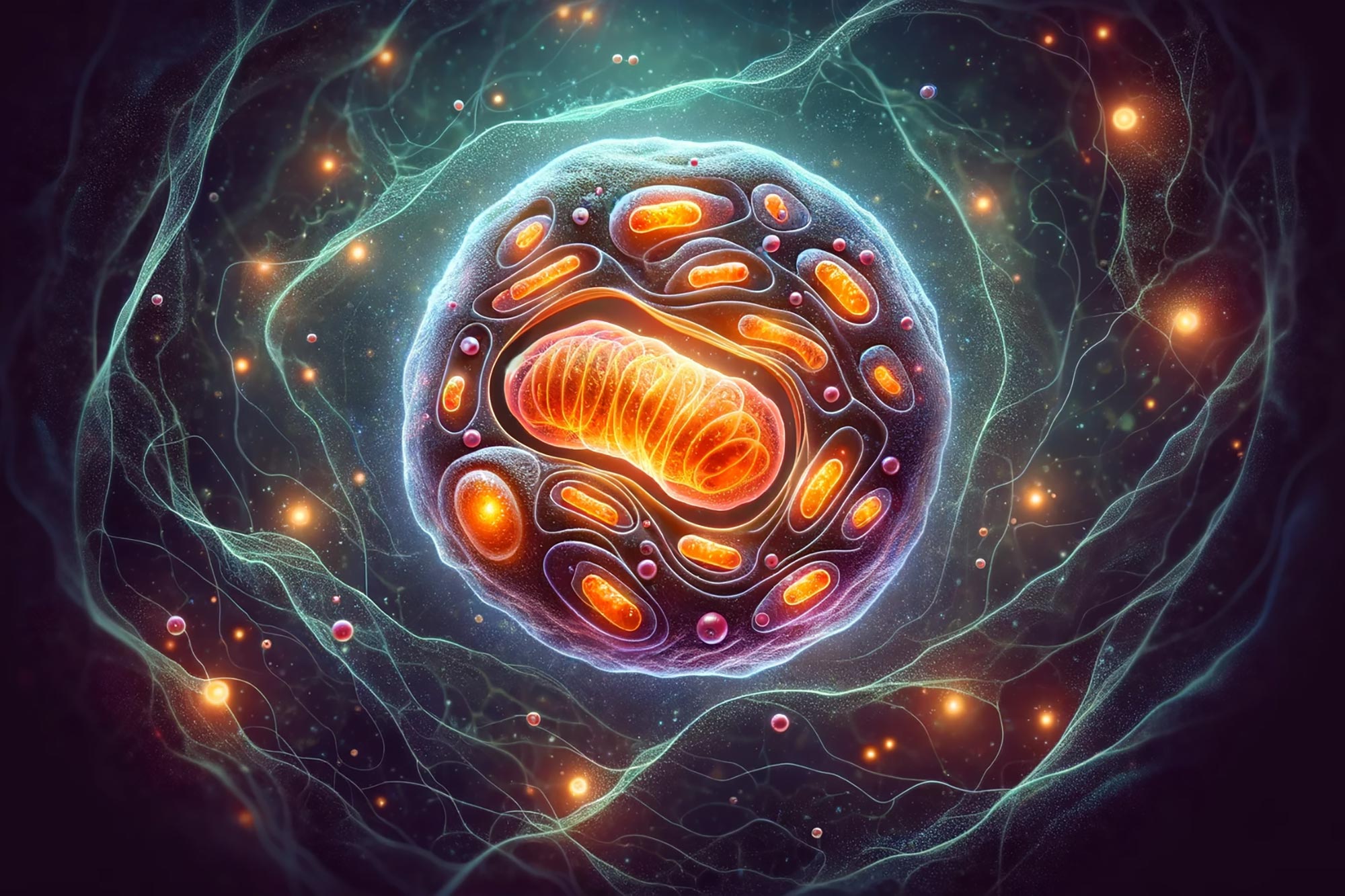Osaka University research highlights the critical role of the HKDC1 protein in maintaining mitochondria and lysosomes, thus preventing cell aging and related diseases. This discovery opens up new potential therapeutic approaches for aging-related conditions. Credit: SciTechDaily.com
Researchers from Osaka University have identified a protein called HKDC1 that is essential for maintaining two cellular structures, mitochondria and lysosomes, thus preventing cellular senescence.
Just as healthy organs are essential to our well-being, healthy organelles are essential for proper cell function. These subcellular structures perform specific functions within the cell, for example, mitochondria provide the cell with energy, and lysosomes keep the cell tidy.
A breakthrough in understanding organelle maintenance
Although damage to these two organelles has been linked to aging, cellular senescence, and many diseases, the regulation and maintenance of these organelles has remained poorly understood. Now, researchers at Osaka University have identified a protein, HKDC1, that plays a key role in maintaining these two organelles and thus works to prevent cell aging.
There has been evidence that a protein called TFEB is involved in maintaining the function of both organelles, but targets for this protein have not been identified. By comparing all the genes of a cell that are active under certain conditions, and using a method called chromatin immunoprecipitation, which can identify DNA Against the proteins, the team was the first to show that the gene encoding HKDC1 is a direct target of TFEB, and that HKDC1 becomes upregulated under conditions of mitochondrial or lysosomal stress.

Overview: Both mitochondrial and lysosomal stress induce nuclear translocation of TFEB, followed by increased HKDC1 expression. HKDC1 stabilizes PINK1 through interaction with TOM70, thereby facilitating PINK1/Parkin-dependent mitophagy. In addition, the HKDC1 and VDAC proteins with which it interacts are important for repairing damaged lysosomes and for maintaining communication between mitochondria and lysosome. HKDC1 prevents DNA damage-induced cellular senescence by maintaining mitochondrial and lysosomal homeostasis. Image source: 2024 Cui et al., HKDC1, a target of TFEB, is essential for maintaining mitochondrial and lysosomal homeostasis, preventing cellular senescence. With people
Mitochondrial protection mechanisms
One way to protect mitochondria from damage is through the process of mitophagy, which is the controlled removal of damaged mitochondria. There are several mitophagy pathways, the most well-characterized of which depend on proteins called PINK1 and Parkin.
“We observed that HKDC1 co-localizes with a protein called TOM20, which is located in the outer mitochondrial membrane,” explains lead author Mengying Cui, “and through our experiments, we found that HKDC1, and its interaction with TOM20, is critical for attenuating PINK1/Parkin-dependent mitophagy.”
Role of HKDC1 in lysosomal repair
So, simply put, HKDC1 is brought in by TFEB to help get rid of mitochondrial waste. But what about lysosomes? Well, TFEB and KHDC1 are major players here as well. Reducing HKDC1 in the cell has been shown to interfere with lysosomal repair, suggesting that HKDC1 and TFEB help lysosomes recover from damage.
“HKDC1 is localized to mitochondria, right?” “Well, this also seems to be crucial for the lysosomal repair process,” explains lead researcher Shuhei Nakamura. “You see, lysosomes and mitochondria communicate with each other via proteins called VDACs. Specifically, HKDC1 is responsible for the interaction with VDACs; This protein is essential for communication between mitochondria and lysosomes, and thus lysosomal repair.
Potential therapeutic effects
These two diverse functions of HKDC1, with key roles in both the lysosome and mitochondria, help prevent cellular senescence by simultaneously maintaining the stability of these two organelles. Since dysfunction of these organelles is associated with aging and age-related diseases, this discovery opens new horizons for therapeutic approaches for these diseases.
Reference: “HKDC1, a target of TFEB, is essential for maintaining mitochondrial and lysosomal homeostasis, and preventing cellular senescence” With people.
doi: 10.1073/pnas.2306454120
Funding: Japan Society for the Promotion of Science, Japan Science and Technology Agency, Ministry of Education, Culture, Sports, Science and Technology, Japan Medical Research and Development Agency

“Extreme travel lover. Bacon fanatic. Troublemaker. Introvert. Passionate music fanatic.”






More Stories
'Survivor' host Jeff Probst says Season 50 will be all players returning
SpaceX has launched a Falcon 9 rocket on its record-setting 20th mission
Sixto Roll & Write review, test and critique